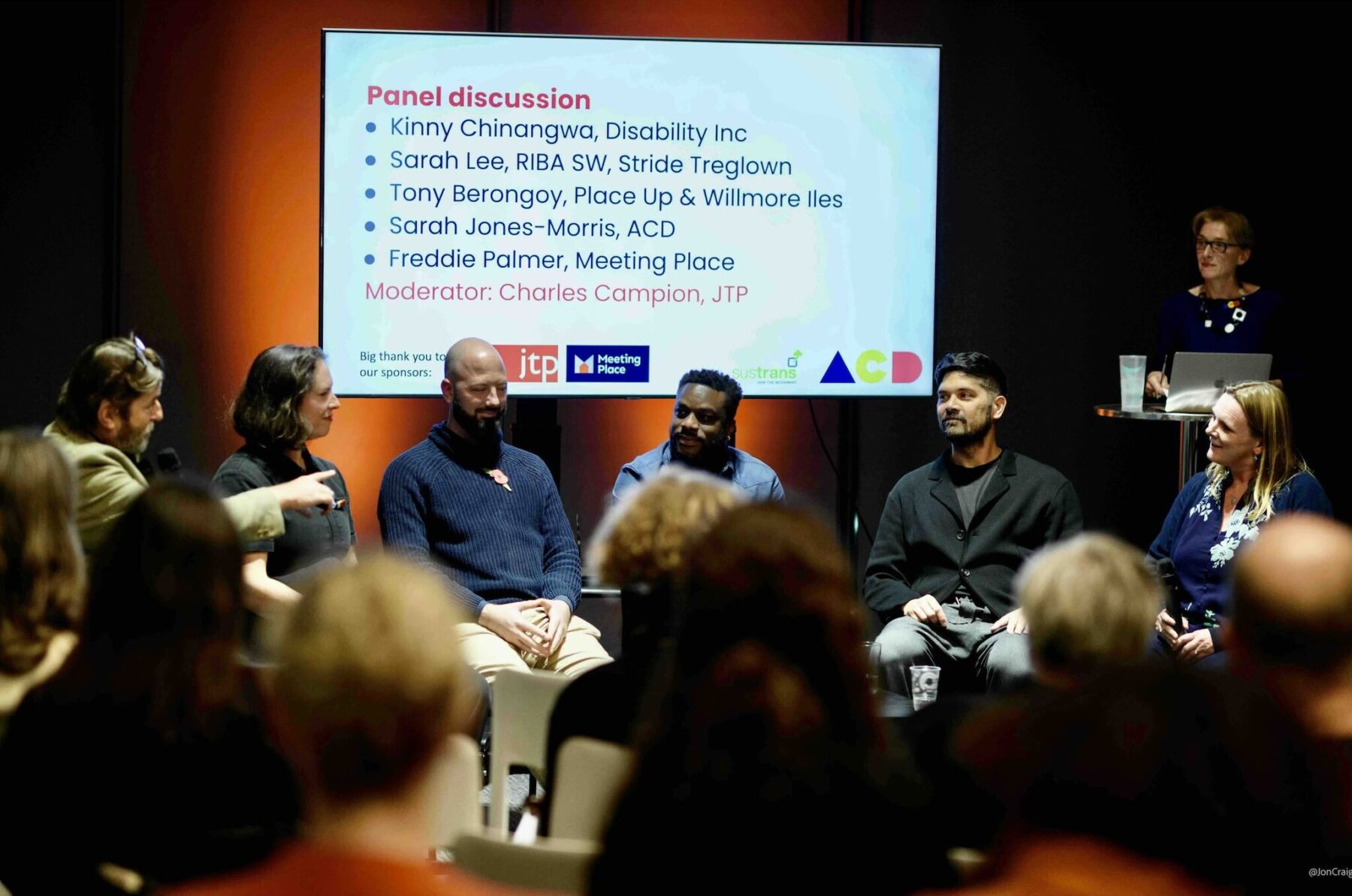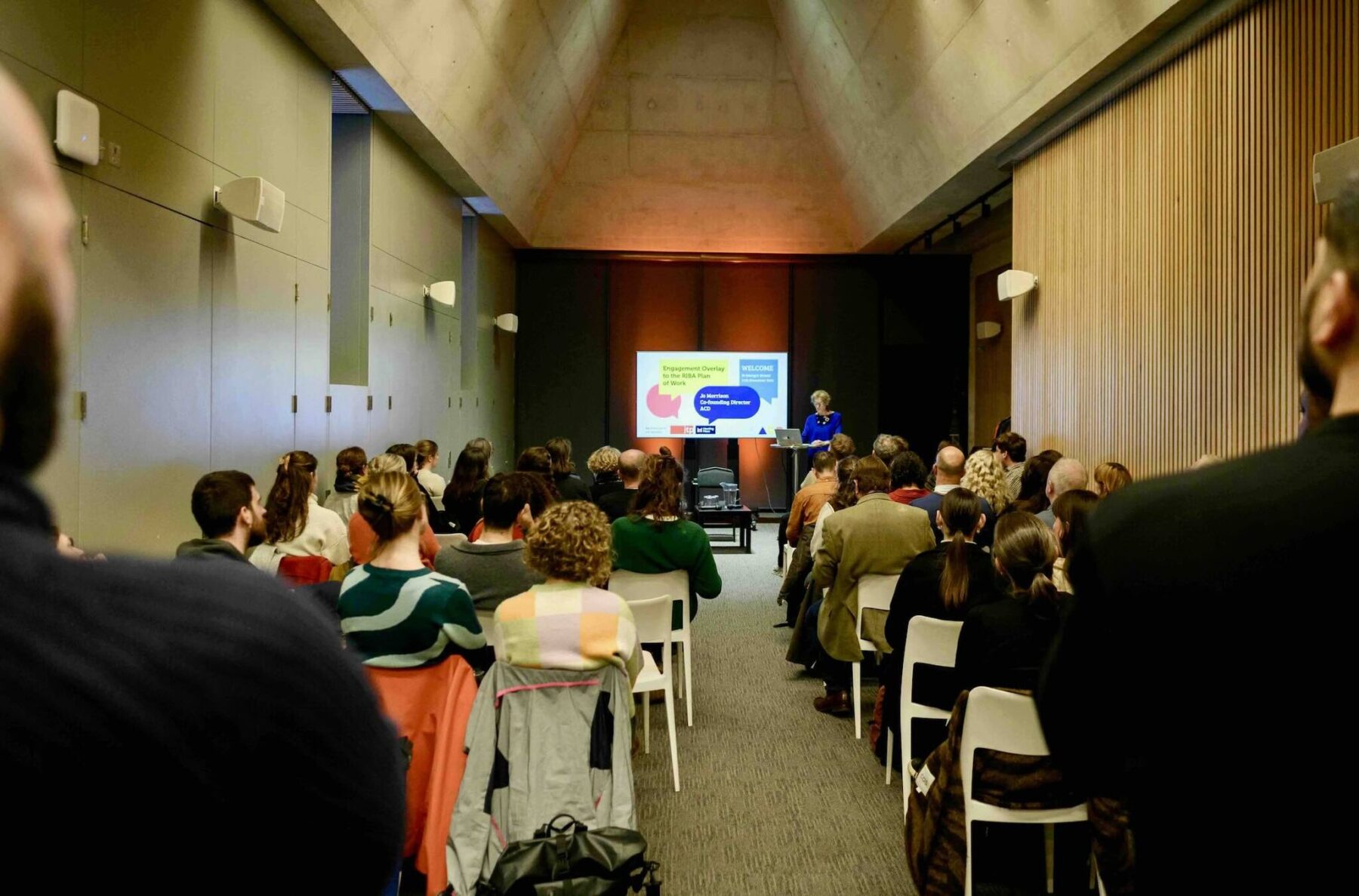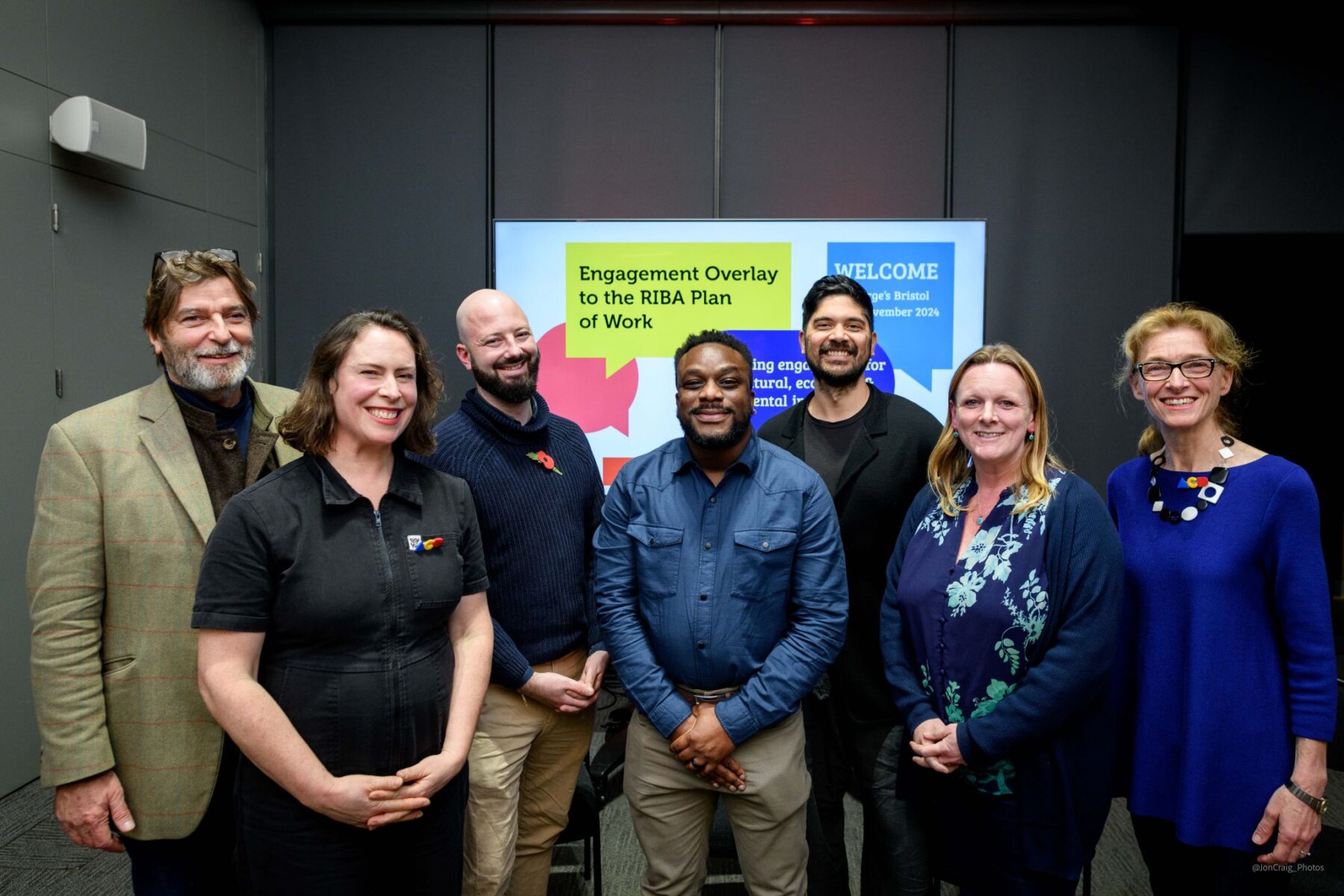WIA attend RIBA Plan of Work Engagement Overlay in Bristol
On Monday 11th November, Willmore Iles Architect Tony Berongoy participated in a thought-provoking panel at the launch of the RIBA Plan of Work Engagement Overlay in Bristol. At Willmore Iles Architects, we believe this initiative is crucial as it emphasises the importance of creating quality and inclusive spaces, especially at a time when governance tends to prioritise the quantity of housing.
“The main objective of the Engagement Overlay is to provide a standardised approach and create a baseline for architects and other built environment professionals. Its aim is to enhance the quality of engagement with all stakeholders and to create capacity for public participation.
Acknowledging engagement as an integral aspect of the professional service makes it possible to allocate adequate financial planning and resources accordingly. This proactive approach helps mitigate risks and ensures favourable outcomes for all stakeholders. Furthermore, using the Engagement Overlay, built environment professionals can provide evidence of good quality engagement, a frequently requested requirement for procurement frameworks.
The Engagement Overlay aims to go beyond traditional methods and levels of public participation of solely informing and consulting. It aims to provide the mechanisms and structure for facilitating early, effective, and proportionate engagement throughout all work stages while adhering to the existing RIBA Plan of Work framework. The current RIBA Plan of Work does not include engagement as a core task throughout its eight stages. Instead, it is an additional service based on the more traditional approach to public participation (or consultation).
The primary objective of the overlay is to foster a more inclusive and democratic design approach. It aims to facilitate shared decision-making, establish a benchmark for exemplary practices, and enhance professional expertise. Additionally, it ensures that projects effectively address the needs and aspirations of stakeholders, particularly by enhancing communities’ adaptive capacity and promoting a resilient future for everyone. While working on a project, built environment professionals’ involvement may be constrained to a short duration; the significance of their contribution extends beyond that period. By providing a technical framework for engagement, the overlay encourages a participatory and collaborative approach, cultivating trust, transparency, and accountability among project and client teams and stakeholders.
The intended outcome is to achieve inclusive and sustainable urbanisation, aligned with UN Sustainable Development Goals 10.3, 11.3 and 16.7, by enabling professionals and stakeholders to work together to create environmentally resilient spaces with strong social values that effectively respond to climate change and the biodiversity crisis.
 Photos by Jon Craig
Photos by Jon Craig
The Engagement Overlay endeavours to increase understanding of the engagement process throughout all work stages. As such, the guide should help to:
- facilitate a more democratic design approach;
- enrich a project with valuable local knowledge and diverse perspective;
- share decision-making;
- provide a central benchmark and reference point for best practice;
- build skills within architects and other built environment professionals;
- ensure the project and process meet the needs and aspirations of stakeholders; and,
- be a resource for facilitating client and stakeholder communications.
There are significant advantages to effective engagement. These include identifying value and optimising benefits for everyone involved. Early planning, meticulous preparation, active listening, conflict resolution, mentoring, and inclusive design principles are key strategies to reduce risks and challenges while maximising opportunities. Managing diverse opinions presents challenges but also rewards. Local stakeholders possess expertise, first-hand knowledge, and insights into their locality, enhancing engagement, long-term project ownership, and more resilient neighbourhoods.”
 Photos by Jon Craig
Photos by Jon Craig
Alongside brilliant minds like Kinny Chinangwa, Sarah Lee RIBA, Freddie Palmer, Sarah Jones-Morris, Charles Campion, and Dr. Jo Morrison, Tony delved into strategies for inclusive and effective engagement within the built environment.
Here are some key takeaways from the evening:
- Authenticity in Engagement: Establishing genuine trust with communities can lead to valuable insights and drive meaningful change.
- Governance: They discussed the significance of developing visions for places, emphasising that these should occur at a strategic and policy level.
- Accessible and Inclusive Approaches: It was highlighted the importance of tailoring our tools and processes to ensure that everyone, especially marginalised voices, has a seat at the table. This includes designing engagement sessions that promote meaningful and tangible outcomes.
 Photos by Jon Craig
Photos by Jon Craig
Special thanks to Emma Chung for the invitation and to everyone who attended. It was a pleasure to make new connections and reconnect with familiar faces. How do you incorporate community engagement into your work?
#Architecture #CommunityEngagement #RIBA #InclusiveDesign #BristolEvents #BuiltEnvironment #Willmore Iles Architects